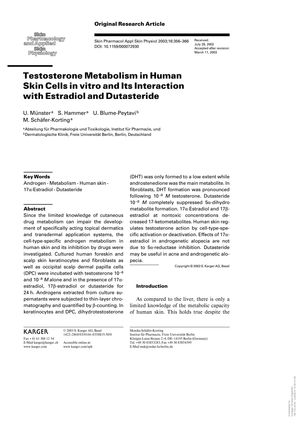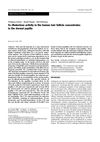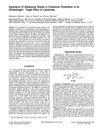Testosterone Metabolism in Human Skin Cells In Vitro and Its Interaction with Estradiol and Dutasteride
January 2003
in “
Skin pharmacology and physiology
”
testosterone estradiol dutasteride keratinocytes dermal papilla cells DPC dihydrotestosterone DHT androstenedione fibroblasts 5alpha-dihydro metabolites 17alpha-estradiol 17beta-estradiol 17-ketometabolites 5alpha-reductase inhibition androgenetic alopecia testosterone estradiol Avodart skin cells DHT androstenedione fibroblasts 5alpha-dihydro metabolites 17alpha-estradiol 17beta-estradiol 17-ketometabolites 5alpha-reductase inhibition male pattern baldness

TLDR Different skin cells process testosterone differently, and certain drugs can change this process, possibly helping treat acne and hair loss.
The study investigated the metabolism of testosterone in different human skin cells and how it is affected by estradiol and dutasteride. It was found that in keratinocytes and dermal papilla cells (DPC), dihydrotestosterone (DHT) was formed to a low extent, with androstenedione being the main metabolite. In contrast, fibroblasts showed pronounced DHT formation when exposed to lower concentrations of testosterone. Dutasteride effectively suppressed the formation of 5alpha-dihydro metabolites, while 17alpha-estradiol and 17beta-estradiol reduced 17-ketometabolites at non-toxic concentrations. The study concluded that human skin cells regulate testosterone action in a cell-type-specific manner, suggesting that dutasteride may be beneficial for treating acne and androgenetic alopecia, while the effects of 17alpha-estradiol in androgenetic alopecia are not due to 5alpha-reductase inhibition.


![Activity of 17β-(N-Alkyl/Arylformamido) and 17β-[(N-Alkyl/Aryl) Alkyl/Arylamido]-4-Methyl-4-Aza-5α-Androstan-3-Ones as 5α-Reductase Inhibitors in the Hamster Flank Organ and Ear](/images/research/861159f1-7bd4-420c-a16b-4829458efe68/small/15592.jpg)



